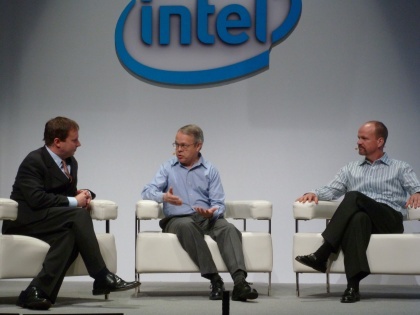hist78
Well-known member
“This initiative is a terrific example of how integrated manufacturing is foundational to Intel’s success. Our global factory network and supplier ecosystem directly enable a more adaptable and resilient supply of products. Over the past year, as substrates were constrained across the industry, our ability to leverage internal capacity created more than $2 billion in revenue upside for Intel, allowing us to respond with agility to meet dynamic customer demand.”
–Keyvan Esfarjani, Intel executive vice president and chief global operations officer
Source: https://www.intel.com/content/www/u...ctory-helps-overcome-substrate-shortages.html
My thoughts:
Gauging Intel's 2021 revenue growth against other major semiconductor companies, it doesn't show that Intel's IDM model is superior. Most major semiconductor companies can grab the opportunity to grow their revenue by double digits percentage in 2021. But in the same year Intel can only increase their revenue by 1% under their supposedly excellent IDM capabilities.

From the Intel Q1 2022 negative YoY revenue growth, I can't see the IDM model is helping Intel greatly either.
–Keyvan Esfarjani, Intel executive vice president and chief global operations officer
Source: https://www.intel.com/content/www/u...ctory-helps-overcome-substrate-shortages.html
My thoughts:
Gauging Intel's 2021 revenue growth against other major semiconductor companies, it doesn't show that Intel's IDM model is superior. Most major semiconductor companies can grab the opportunity to grow their revenue by double digits percentage in 2021. But in the same year Intel can only increase their revenue by 1% under their supposedly excellent IDM capabilities.
From the Intel Q1 2022 negative YoY revenue growth, I can't see the IDM model is helping Intel greatly either.
Semiconductor Companies Q1 2022 Revenue Growth (Excluding equipment, software, and materials manufacturers)
Now still a good time to be in the Semicon game!! For long term investors, this might be a good time to look into those semiconductor companies with good revenue growth potential and strong products and services position in the market. But Intel is probably not one of them.
semiwiki.com
Last edited:

